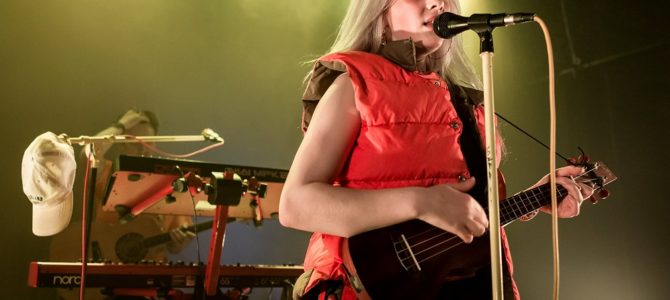
There was a time pop culture was more easily interpreted as something of a statement on the national mood, because the existence of fewer choices meant creators had to appeal to broader audiences. Of course there’s probably always been some measure of a disconnect between Hollywood and the Heartland, but at least in the past we had widely shared media experiences beyond the Super Bowl, meaning it was easier to know what people were watching and how it was affecting us.
This seems to be playing out in late-night television, where hosts are carving out sizable cultural niches that wouldn’t have drawn enough eyeballs in the days where viewership was measured in the double-digits, but works well enough now that audiences are splintered. I think it’s also true in music, where album sales mean less, listeners are trading radio for streaming services, and artists build huge followings on social media.
“Old Town Road” is the top song in the country right now; Billie Eilish has the top album. We still have decent metrics for measuring the popularity of music, but the waning importance of radio means listeners can scatter, and the gatekeepers have less control.
Does Eilish, for instance, enjoy the same level of celebrity someone of equal accomplishment would have had 15 years ago? I don’t know. There are Soundcloud stars, Instagram stars, YouTube stars, Twitter stars, TikTok stars. Some artists, like Eilish and Lil Nas X, transition from success on a platform like Soundcloud to broader reach. But like Vine, TikTok has its own celebrities. So do YouTube and Instagram. We’ll always have George Clooneys and Lady Gagas, but it almost feels like we might be lurching towards a future with fewer superstars and more stars.
We can still read the market a little more clearly in music, and on social media, but the enigma of streaming services illustrates these challenges well. The problem is this: At a time when we’re both more able and more willing to concentrate in niches, we also have fewer metrics to understand what’s actually happening in our culture.
Even Netflix’s self-reported numbers on “Birdbox” didn’t really tell us all that much without means of comparison, which is what makes television ratings worthwhile for culture critics as well as advertisers. In his recent review of “Santa Clarita Diet,” Daniel Fienberg of The Hollywood Reporter reflected helpfully on this dynamic:
One of the amusements of Netflix’s mystery-driven algorithm is never quite being able to predict what below-the-radar offering is about to become a cultural touchstone — be it the latest star-free rom-com or tawdry true-crime documentary or Israeli domestic melodrama — and what A-list-driven, heavily promoted original is about to become culturally invisible.
I don’t know that Santa Clarita Diet is completely culturally invisible. I’m certain, or certainly hopeful, that it has a dedicated audience. It’s plausible that Santa Clarita Diet is actually a huge hit, because who would ever know with Netflix? I do know that the third Santa Clarita Diet season premiered this week and reviews are sparse (but also enthusiastic, which is what happens when a show reaches a point at which only the critics who like it are bothering to review). I also know that the ‘Awards’ page on the IMDb page for Santa Clarita Diet is limited to a lone nomination (though all praise to the WGA for recognizing series creator Victor Fresco’s hilarious second season finale).
“Maybe Santa Clarita Diet is one of Netflix’s stealth hits? … Santa Clarita Diet isn’t a stealth show,” Fienberg wrote. “It isn’t some quirky, auteur-driven indie meant to be cherished by a tiny, elitist audience of critics like me. Though sometimes even shows in that niche can become invisible.”
We have absolutely no idea. People could be watching “Santa Clarita Diet” in similar numbers to something like “It’s Always Sunny in Philadelphia,” or they could be completely ignoring it. The same goes for every show on Amazon, Hulu, and Netflix. We can see what people are chattering about on social media (hardly a representative sample), and where the companies are putting their money. But that’s it. Not only do true “cultural touchstones” seem to be fewer and farther in between in the streaming era, we also have fewer tools to determine what they actually are.
Of course, we still have ratings and box office sales and follower counts and charts that tell us what’s working. For now, at least. The democratization of media also has plenty of advantages. Rather than sitting through gentle political stylings of Jay Leno, liberal viewers can turn to Stephen Colbert, or Hasan Minhaj, or Samantha Bee, or Trevor Noah or even a podcast. Jimmy Fallon offers something different as well.
Conservative viewers with little interest in liberal comedy can catch up on “Last Man Standing.” Quirky shows that may have suffered the “Arrested Development” fate 15 years ago can build niches that make them worth investing in for streaming platforms.
But it also means there’s more incentive for the creators of pop culture to carve us up by our differences rather than find ways to bring us together. It means we’re sharing fewer cultural experiences beyond the process of logging onto Netflix or Spotify, after which the home screen is already customized. On top of all this, it means we’re more and more in the dark about what’s entertaining us, and why that matters. What does cultural impact look like in an era of proliferating niches, where the metrics are murky?









